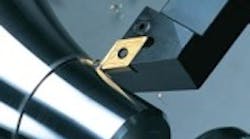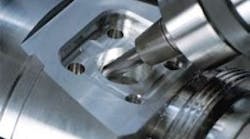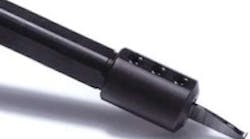Balance Sensor software detects Baxis imbalance in Cincinnati Machine's multitasking machining centers.
Imbalance conditions in rotary Baxis tables are detected by Balance Sensor technology developed by Cincinnati Machine (www.cincinnatilamb.com). The software is designed to sense rotary table, fixture and part imbalance using direct feedback from machine controllers.
Integrated within Siemens Sinumerik 840D controls on Cincinnati multitasking machining centers, the Balance Sensor monitors Z-axis following error to sense table imbalance. The software numerically tracks low frequency — 5 Hz, or below — irregularities. If an imbalance condition exists, the software generates a graphical display to identify the location of the imbalance and how much compensating weight is needed to correct the problem.
The Balance Sensor technology derives from Cincinnati Machine's development of a multitasking machine based on a conventional horizontal-milling-machine platform fitted with a rotary B-axis table. The table is designed to spin at speeds to 700 rpm to permit turning operations. Large table loads and high turning speeds generate elevated kinetic loads that make vibration and imbalance critical considerations. Initially, the company tried to use rotary tables fitted with commercially available balance sensors. Those commercial sensors lacked the capability to sense accurately the very small displacements involved. They were developed to work at spindle frequencies of 100 Hz and higher, and they lack sufficient sensitivity at low frequencies.
To overcome these problems, Cincinnati Machine engineers used the Z-axis scale feedback and a sensitive sensor fitted to the slide axis that carries the rotary table to indicate imbalance.
The company says its Balance Sensor technology reduces machine downtime and unnecessary maintenance costs when integrated with its Freedom E-log system, which captures and processes machinehealth data to improve processes and maintenance operations. By monitoring Balance Sensor vibration or imbalance data stored in the controller, the Freedom E-log system provides an early-warning indication of conditions needing maintenance.







